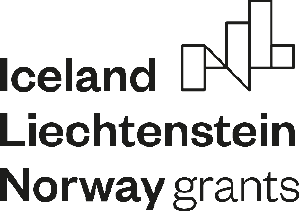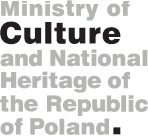The beginnings of the Jewish presence in Wadowice can be traced back to the end of the 19th century. There are several reasons for such a late settlement. In the Middle Ages, the region did not belong to Poland; until 1564, it formed part of the Duchy of Oświęcim and Zator. It was ruled by the Piast dynasty, which did not allow Jews to settle in its subordinate territories except for the towns of Oświęcim and Zator. Moreover, the Wadowice bourgeoisie held the de non tolerandis Judaeis privilege. It was issued in Warsaw by King Augustus III on 6 November 1754 and confirmed by subsequent rulers. This indicates that Jews had never lived in Wadowice before. Their absence is confirmed by the fact that Wadowice is not mentioned in the register of the Council of Four Lands for the period 1580–1764, which contains a list of kehillot paying tributes. The de non tolerandis Judaeis privilege was confirmed on 28 May 1765 by a royal decree of Stanisław August Poniatowski.
After the First Partition in 1772, Wadowice was annexed by Austria. Emperor Francis II confirmed the de non tolerandis Judaeis privilege for the town, with a rescript issued on 28 May 1793. The ban remained in force until the 1860s. Before its abolition, Jews settled in neighbouring villages: Chocznia, Tomice, Radocza, and Klecza Górna, and in the area of the Mikołaj estate, in the so-called “Groble” belonging to the Krobicki family, located in the suburbs of Wadowice. Ca. 1830, the first wooden synagogue was built in the area.
The events of the Spring of Nations contributed to the establishment of political rights of the Jewish population of Austria. However, it was not until the adoption of the Constitution of 1867 that all Austrian citizens were made equal and gained the same civil and political rights regardless of their religion. Taking advantage of the legal changes, the first Jews began to settle in Wadowice after the fall of the January Uprising. The first person to receive the right to live in the town was Baruch Thieberg, a participant in the uprising. Thanks to his background, he was guaranteed safety and tolerance of other townsmen. He was soon followed by other Jewish settlers.
The years 1867–1890 marked a period of intensive development of the town and a significant influx of Jews. The first Jewish stores and warehouses appeared in the town. Wadowice soon became a thriving commercial centre, competing against Bielsko or even Kraków. The local fairs, earlier enjoying only marginal importance, soon turned into vastly popular events. The biggest role in wholesale trade was played by flour and grain merchants. They bought goods in the northernmost part of the district, which enjoyed more fertile land and thus was more affluent, and sold them in the poor southern part, often on credit, especially during the “lean” period. Jews also played an important role in the industry in Wadowice and the surrounding area. They ran a sawmill and a mill, factories producing liqueurs, paper products, carpets, cement, and confectionery. They employed Polish workers. They also contributed to the development of cottage industry, including basket weaving, with wicker from the banks of the Skawa River cut on a massive scale. As Polish trade institutions started to develop in the interwar period, anti-Semitic slogans and appeals to thwart Jewish competition became more and more popular. Earlier, based on the memories of the inhabitants of the community, the competition between the religions had not been so visible. “The entire town and district gained wealth and benefited from the diligence of [...] the Jews.”
In 1876, the local Jewish population (from the Wadowice District) most likely belonged to the kehilla in Zator. Though it is hardly possible, some researchers have suggested that the local Jews may have belonged to the community in Zabłocie near Żywiec. Data from the 1880 census shows that there were 404 Jews living in the town. They took advantage of the Austrian regulations on the obligation to register communities and statutes, seceding from the Zator kehilla in 1881 and forming an independent Jewish community in Wadowice.
At first, almost all of the members of the Wadowice community were progressive German Jews, most often speaking German and not Yiddish or Polish. They wore clothes that did not distinguish them from the Christian part of the society (on public holidays men wore cylinders and frock coats). They were not interested in the modern Hebrew and Yiddish literature developing at the time, and read exclusively German newspapers and books. Children were given German names, and German was used in inscriptions on tombstones. The influence of German Jews was also strong in the later period – they willingly traded with the nearby Bielsko, also dominated by assimilated German-speaking Jews. Soon, however, the Wadowice community lost its progressive and German character. This was due to the influx of Jews from nearby Galician villages and towns, who used Polish and Yiddish on a daily basis. There were also many Hasidim among them. Traditional Jewish clothes, so far absent from the town, soon became a staple. This shows that the Wadowice community was diverse and underwent many transformations in its short history. There was a saying in Yiddish that Wadowice was a zusamengelofene shtet (literally “a town to which everyone has fled”), devoid of any settled Jewish families with long traditions.
Apart from Wadowice, the local kehilla had jurisdiction over the Jewish populations of Babice, Bachowice, Barwałd Dolny, Klecza Górna, Barwałd Środkowy, Chocznia, Dąbrówka, Gorzeń Dolny and Górny, Jaroszowice, Jaszczurowa, Kaczyna, Klecza Dolna and Środkowa, Kozieniec, Łękawica, Marcówka, Mucharz, Ponikiew, Radocza, Roków, Skawce, Śleszowice, Świnna Poręba, Tarnawa, Tomice, Witanowice, Zawadka, and Zembrzyce. Some towns and villages changed their administrative affiliation after the borders between districts were modified in the years 1876–1904.
Before a rabbi was appointed in Wadowice under a special statute, the function was performed by Zvi Elimelech Greisman, called more tzedek (“fair teacher”). Mordechai Rotenberg was the first official rabbi of the town, elected according to the binding regulations. Abraham Müller, his son Ojzer and his son-in-law Tobias Einhorn were involved in kosher slaughter for many years. Each also held the position of cantor.
The community derived income from the production of matzo, which is why it was forbidden to import matzo from other towns or to bake it without rabbinical supervision. The community commissioned the baking process to private individuals, providing them with a room near the beth midrash, tools, and flour. Depending on their financial capabilities, the buyers declared the price themselves. The poorest people got their matzo for free. For a long time, Hirsz Lauber was the local baker. The Hasidim had the right to bake matzo without community supervision. On the last evening before Passover, they were given access to the baking room.
In 1882, the community purchased several plots of land. First, they established a Jewish cemetery with a burial house. In the years 1885–1889, they erected a brick synagogue located in today’s Gimnazjalna Street. Funds obtained from donations of the faithful – at that time about 75 families – proved insufficient to finance the construction, so a loan was taken out from banks in Bielsko-Biała, eventually repaid in 1918. The synagogue was constructed by engineer Karol Korn; he had earlier designed the impressive Reformed synagogue in Bielsko.
In the early period of the community’s existence, the mikveh was private and belonged to Isaac Marek. It was located at Zatorska Street. After the construction of two houses of prayer and a cemetery, the newly established community sought to cut costs and left the bathhouse in private hands, under rabbinical supervision. After World War I, the mikveh was sold to a Pole who did not mind the rabbinical controls, but he would raise the fees, limit the opening hours, or open the bathhouse at times which did not suit the users. It is not surprising that the Jews protested. However, the community did not want to incur more debts and did not intervene. The issue was eventually resolved during the presidency of Chilel Balamuth, when the community took out a loan and built a new bathhouse near the synagogue. The old mikveh was turned into a residential building.
Since there was no Jewish school in Wadowice, the local children attended public schools. In the school year 1888/89, ca. 16 out of all 253 students in the Wadowice secondary school were Jewish. Many Jews studied at the M. Wadowita Public School for Boys – in the year 1893/94, it had 86 Jewish students among a total of 400, in 1906/07 – 55 out of 333. At the turn of the century, 25% of students in the local girls’ school were Jewish. In 1900, Judaism classes were introduced to the curricula of Wadowice’s public schools. The most active teacher was Dr. Chaim Reiter, who taught in almost all the schools in Wadowice in the years 1906–1939. Dr. Ozjasz Frost worked at the public school for girls. According to the regulations in force at the time, Jewish students were exempt from attending classes on Saturdays and Jewish holidays – Rosh Hashanah, Yom Kippur, Sukkot, Hanukkah, Purim, Passover, Lag B’Omer, and Shavuot.
The Jewish community established two foundations in 1873 and 1875. Both provided scholarships for students of the Wadowice secondary school, regardless of their religion.
Two cheders operated in Wadowice in 1900; in the years 1910–1914, the post of the melamed was held by Redner. After his death, there was a period when no education were offered to the youngest Jews. There were also two yeshivot in the town. The first one, Etz Chaim, belonged to the Bobov Hasidim and was a branch of the Bobowa yeshiva. The most talented students from Bobowa would arrive to Wadowice to conduct examinations; the teaching staff was brought to the town from Myślenice. The second yeshiva, Keter Torah, was founded by the Radom Rabbi Henoch Shlomo Rabinowicz. Girls were educated by a teacher called Bubele, whose real name was Silberschütz. She taught them how to read and write in Hebrew. All young Jewish women from Wadowice acquired these skills.
Before Passover, the community board would organise a fundraising event for the poor. At the beginning of the community’s existence, when its members were relatively wealthy, they would take great pains to find any poor people in order to do the mitzvah. However, as the number of newcomers started to grow, the obligation of tzedakah became easier to fulfil.
During World War I, many Jews from Wadowice served in the 56th Infantry Regiment of the Austrian Army. The community board drew up a list of killed Jewish soldiers. The military hospital in Wadowice also provided help to Jewish soldiers from other towns. Those who died were buried in the Jewish cemetery in Wadowice by members of the Chevra Kadisha burial society. During the war, the board of the Jewish community organised joint Seder dinners for Jewish POWs from the Russian Army, held in the POW camp in Wadowice.
After the end of World War I, Wadowice was incorporated into the newly created Polish state. The local Jews took part in the battles waged in order to define the new borders. For example, Seweryn Jeschiwe fought in the 12th Infantry Regiment of the Wadowice Region and died near Lviv. He was posthumously awarded the Cross of Virtuti Militari and the Cross of Valour.
The beginnings of the Zionist movement in Wadowice date back to the period of World War I. Many Jewish soldiers who supported Zionism served in the 20th Regiment of the Stanisławów Landwehr, which was stationed in the town. The socialist scouting organisation Hashomer Hatzair was founded on their initiative. It brought together school-age youth who would meet in private homes to study, promote Zionism in the town, and participate in the scouting movement. Until 1920, the organisation had ca. 120 members and was very successful – as one of the members of the movement recalls, they soon mastered Hebrew at a communicative level. The organisation was later accused of illegal activity and the authorities filed a court case against it; subsequently, its members began to hold covert meetings.
Older youth formed the General Zionist Organisation. Having learned from the mistakes of their younger colleagues, they officially rented a place on Tatrzańska Street and registered their activity with the district authorities. Lectures were given every evening, and the drama club founded by the organisation gave popular performances, including plays by Shakespeare and Ibsen. The General Zionists were the most significant group in the development of the Zionist movement in Wadowice.
In 1921, 1,437 Jews lived in Wadowice, which constituted 20.9% of the total population. Many of them were involved in trade. Out of over 500 Jewish families, 270 earned their living from trade and 60 from crafts.
In 1927, the Mizrachi organisation was established in Wadowice, bringing together many supporters of religious Zionism, including older, respected citizens. Its members would gather on Saturday evenings in the seat of the People’s Bank on 3-go Maja Street to listen to the lectures of rabbis from other cities, which significantly broadened the knowledge they had acquired in the cheder.
Another Zionist organisation was HeHalutz, whose main goal was to prepare its members for Aliyah – the return to the Land of Israel. When migration proved impossible due to the lack of appropriate certificates necessary for travelling to Palestine, the programme was changed to encompass Zionist education and preparation for emigration. The group merged with the Hashomer Hatzair; after the process of reorganisation and obtaining approval of the Lviv headquarters, the Hashomer Hatzair Jewish Scout Organisation was established in Wadowice. There was also a religious organisation called Hanoar Hatzioni in the town. It brought together young supporters of the Zionist movement who were reluctant to join HaShomer HaTzair due to its left-wing ideological bases.
Another organisation established with the future Aliyah in mind was the nationalist Betar group, whose members were given military drills in preparation for joining a future Jewish army.
Among the most important Zionist organisations in the town there was also the WIZO international women’s organisation, which had ca. 150 members. Apart from educational and cultural activities, it organised embroidery courses for girls.
Wadowice boasted many economic, social, and charitable institutions. In 1925, Bencyjon Ber and Kalman Proper founded the Cooperative Bank. It was initially located on Kościuszki Street and later moved to 3-go Maja Street. As time went by, it gained the status of an important financial institution; its clients were not only Jews from Wadowice and nearby towns, but also Poles.
The Merchants’ Association, defending the interests of this large social group, was rapidly developing and growing in importance. The War Veterans’ Association took care of Jewish veterans from World War I and campaigned for fair allocation of disability concessions for the sale of tobacco and alcohol.
The most important philanthropic organisation in the town was the Women’s Association, which provided aid for the local poor. Sick people of modest means were cared for by the Bikur Cholim Association, which paid for their treatment and medications. The aid was very important because there was no Jewish doctor in Wadowice until 1916, and ill Jews had to make visits to Christian physicians or go to Krakow. There was also the Talmud Torah association, which covered the costs of religious education for poor students.
The institutions shaping the cultural life of the Jewish community in Wadowice were: the Jewish People’s Home, established in 1926; the Jewish Intelligentsia Club, established in 1936; and the Jewish Library, established on the initiative of the Zionists.
Two Jewish sports organisations were active in Wadowice in the interwar period. In the years 1922–1926, it was the Hakoach Sports Club – a football team that played championship and friendly matches, often with other teams from Wadowice. The club broke up when a large part of its members left for Palestine. In the Hasa hotel, physical exercise sessions for girls were organised, conducted by instructors from Bielsko.
The Jewish community was significantly affected by the economic crisis of the years 1929–1931. Twelve local shops and workshops were closed, and many others were on the brink of bankruptcy.
In the years 1932–1939, anti-Semitic incidents took place in the Wadowita public school. There were cases of beatings and assaults against some Jewish pupils other members of the Jewish community. Teachers often gave students low grades for conduct because of “anti-Semitic fights.” In other schools, and especially in the secondary school, there were no such problems.
In 1934, the Maccabi Sports Association was established in Wadowice. Apart from a football team, the association also had sections for gymnastics, eurythmic classes, athletics, skiing, tennis, table tennis, volleyball, and basketball. The latter section was particularly successful, as were both tennis sections. The organisation was not affiliated with any political option, which made it very popular. It was maintained from monthly member contributions.
In 1938, a religious Beit Yaakov school for girls was established on a private initiative. Its aim was to broaden the students’ knowledge of Jewish history and culture. The pupils would stage plays in Yiddish. The school had its seat in the Hasa Hotel on Sienkiewicza Street. The institution also ran a kindergarten for girls from religious houses. Another kindergarten, open for all Jewish children, was located at 3-go Maja Street. It organised popular performances with child actors.
With the outbreak of World War II, the property of Wadowice Jews was plundered on a large scale. When the Wehrmacht entered the town on 4 September, the Germans ordered to open all Jewish shops, which were then put under the management of the so-called trustees (treuhaenders). In October 1939, the occupier set fire to the Wadowice synagogue and demolished its ruins in the summer of 1940.
The situation of the local Jews was gradually deteriorating. As in other cities, the Judenrat was appointed. Its first commissioner was Baruch Majerczyk, not a member of the Wadowice community. The Judenrat comprised merchants Rubin Scharfer and Bernard Wolf, the pre-war secretary of the kehilla Eliasz Fiszgrund, and the former cashier of the People’s Bank – Kalman Proper. Initially, the president of the Judenrat was Rubin Scharfer – the pre-war head of the community. Unable to cope with his duties, he resigned from the post, which was taken over by Bernard Wolf.
Most of the Jews from Wadowice were used as forced labour on the regulation of the Skawa River in Skawce, Radocza and Sucha, and the Wieprzówka River in Andrychów. They were transported to the worksite by train and received little remuneration. In the years 1940 and 1941, young people from the town were sent to labour camps. Before the ghetto was established in Wadowice, Jews from Kęty, Sucha, Zator, and the nearby villages had been brought to the town.
The first mass deportation took place on 2 July 1942. The Jews were gathered on a square and divided into three groups: (1) people fit for work, who were sent to work in the sheds, (2) the elderly, crippled and children, sent to the Jewish death camp in Bełżec, (3) people with specific professions, sent to the Dulag labour camp in Sosnowiec.
The Jews who remained in Wadowice were locked in the ghetto, which comprised the following streets: Mydlarska, Kręta, Piaskowa, and the left side of Zatorska. The whole area was surrounded by a wall with barbed wire. Currently, one of the squares located within the former ghetto is called Bohaterów Getta (“Ghetto Heroes”), which makes it is easy to find this particular historical area on the contemporary maps of Wadowice. The quarter was far too small for such a large number of people (ca. 1,400), so shifts were organised – when one half of the population was at work, the other half was sleeping.
On 10 May 1943, after ten months of relative calm, 100 girls were sent to work in Germany. Almost all of them survived. On 10 August 1943, on the day of Tisha B’Av (the second most important fast in the Jewish calendar after Yom Kippur, a symbol of all the suffering of the Jewish nation in exile), the ghetto was liquidated and its inhabitants were transported to the Nazi concentration camp in Auschwitz-Birkenau. It was one of the last Polish ghettos to be liquidated.
After the war, the Jews who survived the Holocaust returned to Wadowice. They soon discovered that they would not be able to rebuild their lives, as their property had been seized by the Poles. The first people arriving to the town were directed to the Hasa Hotel (Sienkiewicza Street), but they soon decided to leave Wadowice forever. The only survivor who tried to continue his old life was Adolf Ebel. He opened his former restaurant, but he eventually migrated in 1949. Only one Jew, Jakub Szancer, remained in Wadowice.
Bibliography
- Iwańska K., “Rozwój osadnictwa żydowskiego w Wadowicach,” Wadoviana 2005, no. 9.
- Memorial Book of the Communities of Wadowice, Andrychów, Kalwarja, Myslenice, Sucha, ed. D. Jakubowicz, Ramat Gan 1968.
- Michalewicz J., Żydowskie okręgi metrykalne i żydowskie gminy wyznaniowe w Galicji, Kraków 1995.
- Samsonowska K., Wyznaniowe gminy żydowskie i ich społeczności w województwie krakowskim (1918–1939), Kraków 2005.
- The Statute of the Israeli Religious Community in Wadowice, Wadowice 1898.
- Studnicki G., Studia z dziejów miasta, Wadowice 1997.
- Ziarkowska A., Getto wadowickie, Powiat Wadowicki [online] http://www.wadowicki.iap.pl/?id=14406&location=f&msg=1 [Accessed: 9 Jun 2014].






